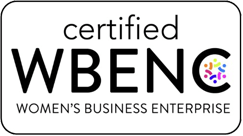If you are reading this, you are probably looking for improvements in life-science marketing and how it approaches client data and strategy. In case you didn’t know, the scientific method in marketing is becoming a hot topic in the industry and helps with exactly that.
So, how can life sciences companies apply the concepts and principles of the scientific marketing method? Let’s jump in.
What Is Scientific Marketing?
What’s been a constant in the marketing field — even amongst life sciences and biotech companies — is not being able to fully understand why certain decisions, campaigns, and products succeed, fail, or simply have a lukewarm response from the audience. In this case, scientific marketing offers a systematic approach that allows companies and marketing teams to fully own and back up their actions with data they can rely on.
Before we keep going, let’s take a quick look into what’s bubbling in the life science industry.
The Current State Of The Life Science Industry
There has been a lot of performance pressure lately caused, mostly, by the decline in the discovery of blockbuster products, aggressive strategies from generic manufacturers, and the rise of Far East competitors in the context of a global economic setback.
This is why biotech, pharmaceutical, and other medical device-designing companies need to rethink their business and turn their efforts to scientific marketing in order to achieve operational excellence and keep that revenue stream growing.
The Decline Of Blockbusters
The blockbuster drugs model (also known as Big-Pharma) produced billions in revenue on a relatively simple scheme: whenever niche products were found, they were discarded or sold to smaller companies with lower operations costs, ensuring a profitable development.
However, this traditional business model became quite frail once the number of newly discovered blockbuster drugs began to diminish.
Recently, investment has been reoriented towards industries such as biotech and biopharma (previously ignored by big pharma players on the market). And with greater investment power comes greater consumer interest in these new technologies.
Generic Competition Is Becoming a Key Player
Big pharma has found a new competitor in generic manufacturers, as they are preying on blockbuster drugs even before they come off patent and reach the shelf.
Generic manufacturers have lower operating costs, lower investment in research, and tighter marketing budgets, allowing them to attack the market quicker and with cheaper products (capping 88% of market share within only two years).
This loss of revenue, in turn, forces big pharma to think twice before investing in new drug discovery. A new trend emerges, though: partnering (or straight-up acquiring) biotech companies with strong pipelines and long patent life on existing products. This protects against generic exploitation in the process.
Far East Competition
China, India, Singapore, and other Far East producers have a tradition of creating cheaper rival products and distributing them on the international market. In turn, this has encouraged leading pharmaceutical companies to establish their own branches in the Far East. They benefit from cheaper labor and tax breaks to remain competitive and significantly reduce production costs.
Is Marketing Based On Scientific Approach The Solution?
What this means for those looking to apply the scientific method in marketing is that no resources or data obtained would be wasteful.
Scientific marketing also allows C-suites to make company-wide decisions such as manufacturing products only when needed, training their employees with data-based approaches, and motivating them to make positive interventions in order to support their customers.
The results are highly differentiated, customer-valued, highly profitable brands with happier customers, lower production costs, and a bigger edge over competitors.
Scientific marketing methods and systems such as Lean, Agile or Six-sigma allow companies to combat waste and variability to pave their way towards a full understanding of their clients.
Lean is inspired by the Toyota Production System, covering the tools and techniques necessary for waste reduction.
Agile is a method involving the development, testing, and learning iterations of product development and marketing activities.
Six-sigma, developed by the Motorola Group, focuses on measuring, identifying, and reducing variability within processes such as flow or demand fluctuations.
The Ultimate Goal: Making It Better For The People

Forty percent of the life-sciences companies aiming to provide the best customer experience are looking to reduce product costs, improve process reliability, and release cash.
Still, flexibility and creating highly differentiated brands are also priorities that are, at times, left aside. Because, let’s face it, many times, marketers are still taking an intuitive approach that is not fully integrating visible, trustworthy data. When aiming to apply scientific marketing tactics, knowing how to work with data is the key to identifying real insights.
From defining the market to selecting targets, understanding the customers and their needs and drivers, to developing a compelling brand positioning, analytics should be used by life sciences companies to make changes that produce better results.
Making it better for the people doesn’t only revolve around the customers. Increasing the speed of production is also one of the main corporate goals across the board.
To achieve this, a stronger focus should be placed on employees as well, training and authorizing them to recognize and fix any issue (management-related or technical) either within their department or outside. This will, in turn, enhance production speed and create a more productive workplace environment, emphasizing the importance of the team.
A New Perspective On Financial Measuring
Traditionally there are three key metrics: cost, quality, and delivery. But capacity absorption and cost avoidance are imperative to companies experiencing financial growth.
The results for these measures are integrated into the company’s general performance metrics.
The Roll-Out Model
This is basically a test drive. If the company can afford the time and resources, conducting pilot trials on a scientific marketing framework before implementation is highly practical.
This allows the company to see exactly what practices are best suited for their work environment, customer engagement/loyalty, marketing efficiency, and organizational culture change — and which can be discarded.
The 7 Keys To Scientific Marketing
So what is the baseline for applying scientific marketing strategies to all operations programs when it comes to life science companies that wish to reach excellence? They are usually summarized in the following 7 rules:
1. People are at the center of all data gathered and analyzed (both customers and employees).
2. The results of a scientific marketing strategy should not be measured by financials alone.
3. Lean and Six-Sigma approaches bring plenty of benefits.
4. Should be exploited throughout the whole company, not just in certain areas.
5. Scientific marketing and its results should become a part of the company’s culture.
6. The Pilot Roll-out model is great for quality assurance.
7. The right set of metrics can help the program track progress and identify issues.
By implementing these principles — which have already been tested by big names such as Pfizer, Johnson & Johnson, or Eli Lilly — your biotech company can integrate science marketing activities faster, and navigate a lot smoother through the changing tides of the post-pandemic pharma world.
If you need support with anything related to life science and biotech marketing, simply reach out to us. We have the knowledge and expertise to help you collect data, develop a great life sciences strategy, product launch consulting, content marketing plan, and much more…
And if you found this article interesting, you might also like:




